|
January
2022
Contents
Monthly Meeting
Upcoming Field Trips
President's Message
Facebook Page Update
Bird of the Month
Special 2020
Challenge Report
Field Trip Reports
JANUARY UCB MEETING:
Thursday, Jan 20th, 7pm
(Changed from the 13th to a Zoom
call).
Zoom in and enjoy the company of fellow birders as we announce the
details of our 2022 UCB Birding Challenge.
We'll also have several reports, take care of regular business and have
the traditional Bird-of-the-Month 20 Questions. Zoom info will be sent via the
UCBirders email list.
FIELD TRIPS:
Christmas Bird Count
-- January 1st, 2021
The Payson count will be on January 1st.
Contact Bryan Shirley at 801-722-9346 or bt_shirley@hotmail.com for
assignments.
Juab
County field trip --
January 22, 2022
Meet at Payson Walmart to the west of the Quick Quack at 8 am. We will look for
birds at Mona Reservoir and if we still need more to get to 22 species we will
stop by Burraston ponds!
President's Message -
January 2021
by Machelle Johnson
New Year - New Challenge!
|
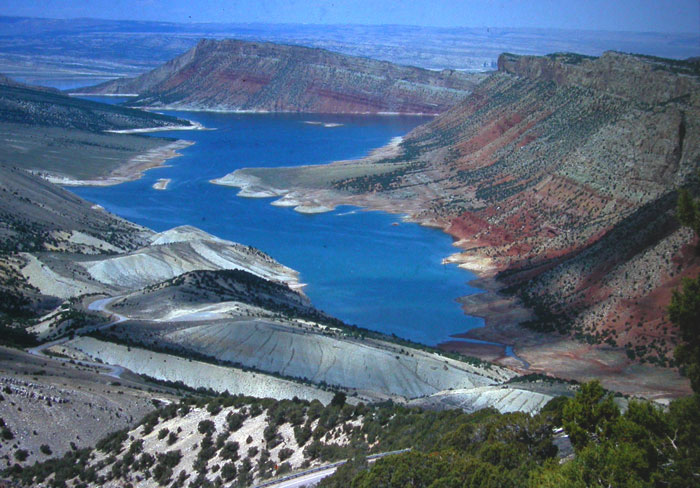
Photo by Merrill Webb
©Merrill Webb |
|
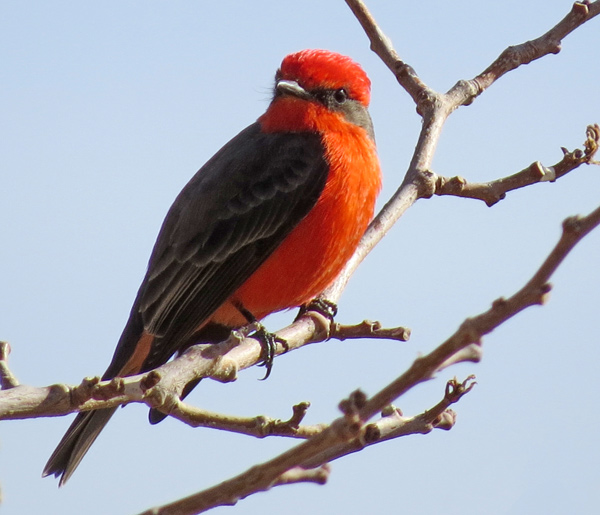
Photo by Cliff Miles
©Cliff
Miles |
We will start the new year off with our 2022 Birding
Challenge. As noted in the December newsletter, we will get out and about
throughout the state! The goal for Gold is 22 birds in 22 counties, plus attend
9 meetings and or field trips. Suzi has a great plan for field trips to take us
to a lot of the counties. When we did this challenge a few years ago I found out
that I really love Daggett County. It sure is remote! My sister and I drove out
to Dutch John and Flaming Gorge. Oh my, it is so beautiful out there! I loved
the ruggedness of it. It was easy to get the birds we needed for our list, and
we saw some really beautiful country. Another favorite is Washington County. I
think it's neat to be able to see such a diversity of birds within our state. I
love the Vermillion Flycatcher and the Cactus Wren! One year we found the Common
Black Hawks and their nest site out by Gunlock Reservoir.
I've never been to San Juan County for birding, just traveling through years and
years ago. We may be able to organize a field trip there this year.
I'm looking forward to getting out more this year and to resume our field trips!
I hope you all had Merry Christmas and that 2022 will be a great year for all!
Machelle
,__,
(0,0)
/)_)
""
|
|
|
|
|
|
|
Utah County Birders Facebook group Update!
Message from the Administrator,
Tammy Northrup
We have updated some things on our Utah
County Birders Facebook group. We hope these changes will help prevent posts that
include spam and other material that is not relevant to our group. We appreciate
the help of all our members to keep our Facebook group a friendly place where we
can share our birding experiences and ask questions. As a reminder here are the
guidelines for our group:
A place for Utah County birders to share photos, video, sightings, birding
adventures near and far, and more! We have all levels of birders as members. Non
commercial, family friendly site. No advertising, and no offensive posts or
language. Please keep posts and comments positive and constructive. This
Facebook page is sponsored by the "Utah
County Birders," a birding group from the north-central part of Utah.
|
|
|
|
|
BIRD OF THE MONTH:
|
|
|
American Dipper
(Cinclus mexicanus)
by Jeremy Telford
We were standing on a bridge, a large waterfall our backdrop,
but we were staring down river through our binoculars. A woman came by.
“What are you looking at?”
I excitedly tell her, “It’s an American Dipper. The only Dipper species in
America.”
“It’s a bird,” my wife added helpfully.
The woman nodded knowingly, glanced down river at the small grey bobbing speck,
and then turned her attention and camera back to the waterfall.
|
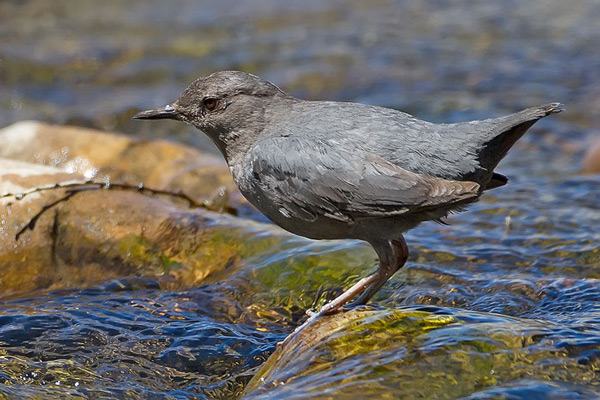
American Dipper
by Kendall Brown
©Kendall W. Brown |
|
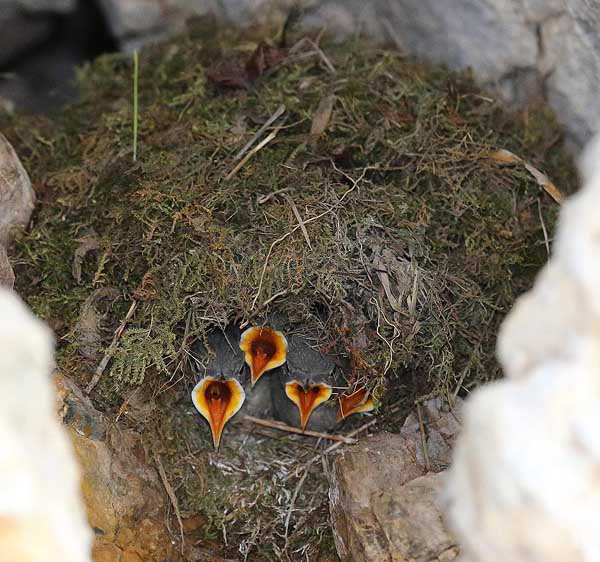
American Dipper nest with hungry youngsters
by Jack Binch
©Jack Binch |
Sometimes I forget that not everyone gets as excited about
birds as we do. Maybe I should have used its old name: the Water Ouzel. It is a
cool name but it would have likely elicited the same response. To be honest it
is not the most vibrant of birds.
It is a little smaller than an American Robin, has a short stubby tail, and is
grey all over except for some yellow on the beak. But while its appearance is
plain its behavior is very interesting. You see, the Dipper lives up to its
name. It is the only aquatic songbird in North America! It bobs and dives below
the fast moving water hunting for aquatic insects and larva, fish eggs, or worms
by moving rocks with its beak. Though they prefer shallower water they have been
known to dive up to twenty feet deep!
They build their nests next to these fast moving streams wherever they can find
a secure space up high enough to prevent flood damage and keep predators away.
Usually it is on a boulder, cliff, bridge, or dam. It seems like these nesting
sites are the main thing limiting the American Dipper population. Their nests
are spherical in shape, the outer layer is moss and the inner layer coarse
grass. This helps keep the inside dry even though the outside is often wet or at
least damp. These nests can be bigger than a soccer ball!
American Dippers don’t migrate. They may move to larger streams or rivers if
theirs freeze over but the Dipper is uniquely adapted to the cold. It has a low
metabolic rate, its blood has evolved to carry extra oxygen and its coat of
feathers is unusually thick. And to help with diving their feathers are
waterproof and they have a nasal flap to plug their nostrils while underwater.
They also have extra eyelids, called nictitating membranes, that they can see
through underwater. Built in diving goggles!
Of course, the feathers aren’t always thick. In late summer the American Dipper
molts its wing and tail feathers temporarily becoming flightless. Though this
may be common for ducks it is unusual for most songbird species.
The American Dipper has a fairly large range, all the way from Alaska, down
through Canada and the Western US to Mexico and Central America. That is not its
only amazing range. It can also range anywhere from sea level to more than
12,000 feet. That’s higher than the peak of Mount Timpanogos!
Females decide on a mate based on his song. Of course what is a song without a
dance? The male stretches his neck so his head and beak face upward while
lowering and spreading its wings. If the female approves it joins in the singing
and touches her breast to his. Awwww, true love.
If only the woman would have let me explain all that, perhaps she too would have
been enamoured of the small grey bobbing speck that was capturing all of our
attention. But probably not. She seemed to really like that waterfall.
https://www.allaboutbirds.org/guide/American_Dipper/overview
https://kidadl.com/animal-facts/american-dipper-facts
https://www.nwf.org/Educational-Resources/Wildlife-Guide/Birds/American-Dipper |
|
Field Trip Reports
|
|
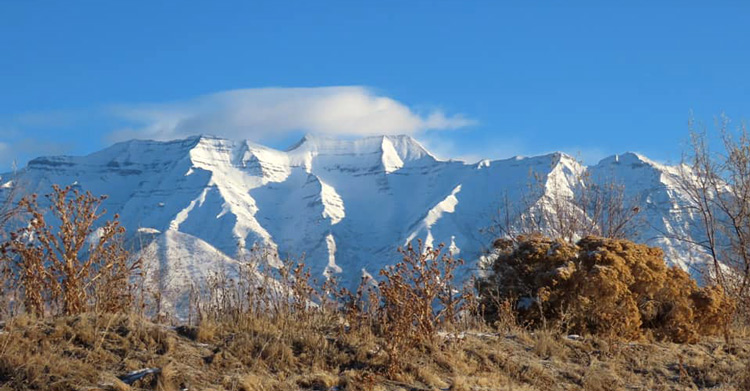 |
|
Provo Christmas Bird Count
-- 2021
18 Dec 2021
by Keeli Marvel
|
|
PROVO CBC RESULTS
A big THANK YOU to
everyone who participated in the Provo CBC this year! We had roughly 50
participants who drove/walked a cumulative 540 miles to find 91 bird species
in our count circle.
|
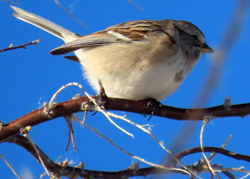
American Tree Sparrow
by Suzi Holt
©Suzi Holt |
Some notable finds this year: Bryan Shirley covered the
East Bay area and he found the only Lincoln Sparrows, Black-crowned Night
Herons and Eurasian Wigeon in our count circle. Jeff Cooper, birding
the East Provo 7 Peaks/State Hospital area, picked up our only Western
Screech-owl (and only owl of the count), and had a Peregrine Falcon
in his area late that afternoon. My group at the BYU Motion Pic Studio lot
picked up only Red-naped Sapsucker. Donel Jensen picked up the only
Harris's Sparrow, Hooded Merganser, and Lesser Scaup in our count
area. J Shirley filled in for his dad in the South Utah Lake/ Benjamin area and
picked up our only two Tundra Swans. They've only been reported on one
other count in 2017. He was also the only area to get Ring-necked Pheasants
in, which is really unusual. Jonathan Peterson, Rex Hadlock, and Steve Peterson
picked up our only Bufflehead on Provo Bay (south Provo around the Hobble
Creek WMA area). Alona Huffaker and Kathleen picked up the only Pine Siskins
in the Springville area. We had two over-wintering American White Pelicans
- one the Deckers found in the Lindon Boat Harbor area, and one that is a
permanent resident in East Bay. Marie Hinckley and her sons got the only
Golden Eagle on the count in the East Orem foothills near the cemetary. Suzi
Holt and her crew got the only Canvasback on the count. We picked up two
overwintering Say's Phoebes - one by Donel Jensen in west Provo, one by
Kayla Echols on BYU campus. We've only picked them up on 5 other years of the
Christmas Bird Count.
One notable miss was Brown Creepers. We didn't get any on the count this year.
We also missed out on Great-horned and Barn Owls this year.
We appreciate everyone who joined in the effort! Next year will be the 50th
Anniversary of the Provo Count Circle, and 50 years of christmas bird counting
is definitely something to celebrate! Stay tuned next year for details.
In the meantime, 2022 brings another UCB birding challenge and we have some
great field trips in the works as part of the challenge! Tune in to our
newsletter or facebook page for more details.
Happy Birding!
|
|
|
|
|
If you have had any interesting
field trips on your own this month,
feel free to write a report for the newsletter!
(Send it to:
ucbirders@utahbirds.org)
|
|
|






